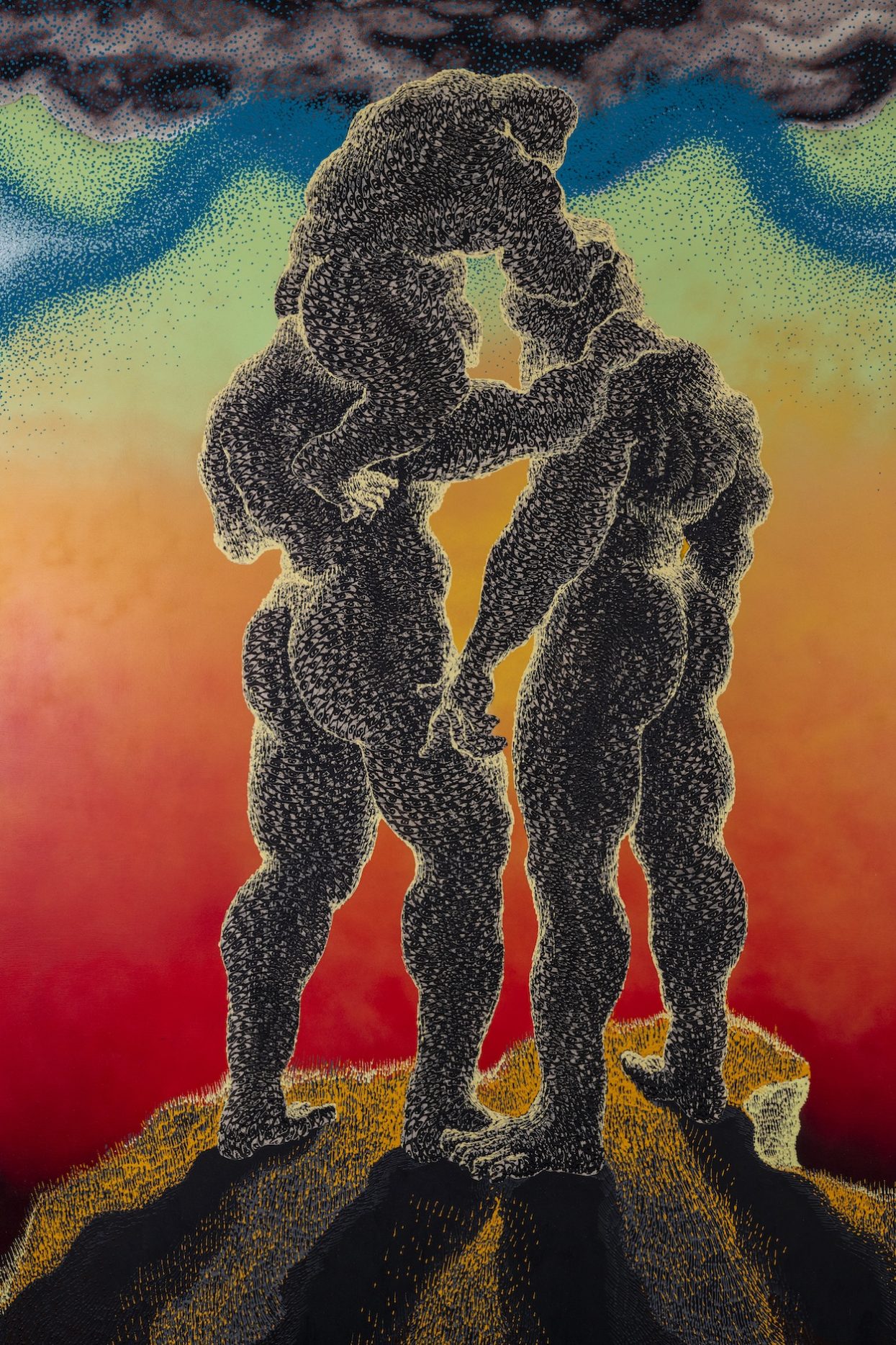Here, we ask an artist to frame the essential details behind one of their latest works.
Bio: Didier William, 39, Philadelphia (@dueyart)
Title of work: Just Us Three (2021).
Where to see it: “Nou Kite Tout Sa Dèyè” at the Museum of Contemporary Art North Miami (770 NE 125th St, North Miami, FL) until April 16, 2023.
Three words to describe it: New parent life.
What was on your mind at the time: This painting takes a bit of segue from the other works. My husband and I became parents almost exactly in line with the pandemic. The date marked as a kind of national shutdown was March 13. Our daughter was born on April 22. In many ways, pandemic life and new parenthood have been wholly inseparable from one another. The more I thought about the past year and a half—the isolation, the fear, the anxiety, the joy, the relief, the fatigue, the surprises—I wanted to think generously about how the complexity of that experience might be imaged.
This painting came to mind. It images the three of us standing at the precipice of a cliff. The blue ray of electricity that pulses through the top part of the painting is a new element. (In a different painting titled Siklon, which means “Hurricane,” the electricity is a much more present element in more work.) Here, I don’t think of “siklon” as a source of destruction. I think of it as the bodies submitting to uniformity with the natural world. Hurricanes are very common in the Caribbean in particular. They forcefully and aggressively reshape the landscape in a manner that operates independently of our egos. This antagonism is something I’ve always loved about representations of nature in painting.
The painting images two masculine-presenting bodies with a smaller, childlike figure precariously balanced on top of their shoulders. There’s an awkwardness to the child. A delicacy that runs in tandem to the tenderness and tone of the painting. This sweet spot was something we thought a lot about during the first year of the pandemic. The joys of being together and bonding with a baby. But the awkwardness of not being able to share this extension of our love with the rest of our family. The figures stand at the precipice of a cliff, perhaps at the border between two worlds. The fiery unknown abyss ahead of them, or the darkened and otherwise invisible field behind them, of which the viewer is a part.
An interesting feature that’s not immediately noticeable: The eyes are carved into the surface of the panel.
How it reflects your practice as a whole: Titanic supernatural bodies have become the norm in my practice. Here they are presented with an intimacy that more recently has helped spawn many new narratives in subsequent work.
One song that captures its essence: None.

